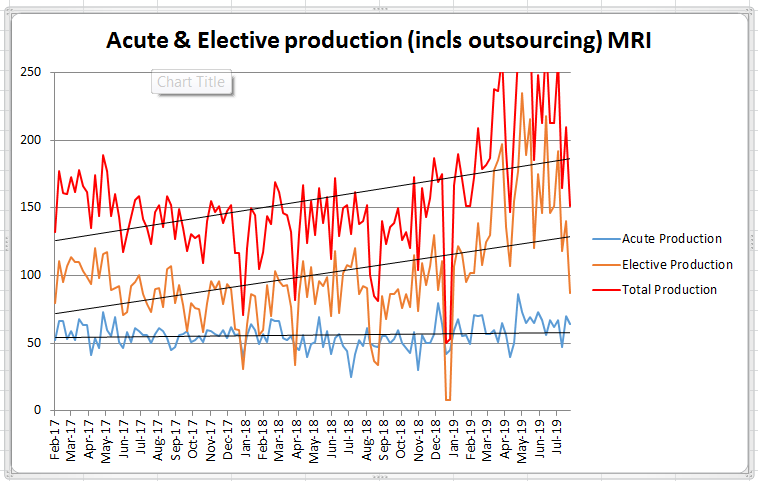Prior to November 2018, CM Health had two MRI units: one situated in a building in Middlemore Crescent mostly for outpatients, and the other in the main radiology department. With a burgeoning demand for MRI overall, and with it being the primary investigation tool for oncology patients, the existing capacity was not sufficient.
As demand for MRI had grown by around 9% in the preceding 24 months, the service put forward a business case to expand by co-locating two new MRIs into the Clinical Service Building , thereby adding a third MRI unit to our fleet. This was a direct response to enable the services to cope with volume demand (unmet need) and increase our ability to provide greater access and equity for our growing community.
Our goals are to increase the capacity of our MRI service to reduce waiting lists and to provide more timely access to MRI for inpatients. This will reduce our contribution to longer stays in the hospital, and potentially lead to a reduction in bed hours and costs. By creating an additional MRI unit, we believe we will enhance health equity for people in the CM Health community, by providing greater access to the resources they need to lead a healthier life.
We have successfully installed two new MRI machines into the Clinical Service Building and they are now running well.
We also implemented an MRI Improvement Project under the aegis of our general manager, and with support from the Ko Awatea team. The project identified a number of issues that we have worked on, workflow practices, communications between referrers and the unit, and some delays in specific groups of patients, for example patients waiting for sedation, those requiring interpreters and those with physical access issues. We have also, with the help of additional part time and casual staff, undertaken weekend sessions.
The waiting list for MRI has been reduced by 65% between January and August 2019. The identified issues with the waiting lists have also been remedied and in doing so, we believe we have optimised the access of these groups to the service.
We have found that co-locating the two MRIs has provided some real and measurable efficiency, especially with our often scarce staffing resources, as shown in the following graph.

With our increased capacity we are able to provide a timelier inpatient service and enable earlier access to MRI for the community than was previously available. This leads to a prompter diagnosis in some cases, and optimises the treatment plans for our oncology patients.
We have certainly made a difference. We have added efficiencies, increased our capacity to provide an excellent diagnostic service in MRI, reduced waiting times for MRI with the inpatient services and, in doing so, may well have created opportunities for more timely diagnoses, treatment and discharges.
Through the MRI Improvement Project, our MRI team has implemented a variety of changes, all of which have increased efficiencies, communication and productivity.
Graph 2 shows the increased productivity in the MRI service since the installation of the new unit.
unit. 
Limited capacity up to November 2018 resulted in sustained waiting lists for imaging, which has been partially addressed by outsourcing.
With the build and installation of the new MRI unit, we are now in a position to reduce our waiting lists and to ultimately pull back on outsourcing and the costs related to that. Once the waiting list is brought down to a manageable level, we will be able to concentrate on optimising our efficiencies and productivity and move towards meeting our Ministry of Health targets.
Last modified: